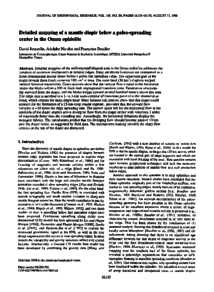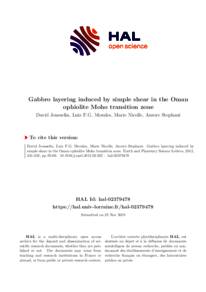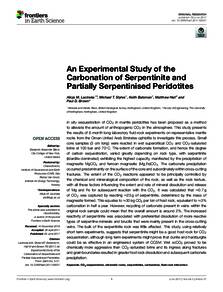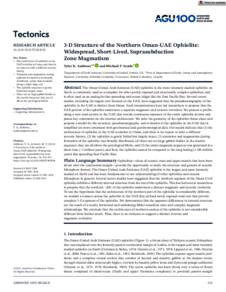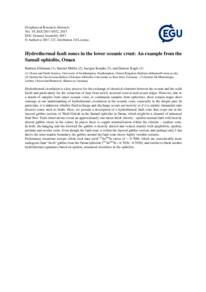Document
Detailed mapping of a mantle diapir below a paleo-spreading center in the Oman ophiolite.
Identifier
DOI: 10.1029/98jb01493
Source
Journal of Geophysical Research: Solid Earth. v. 103, 8, p. 18153-18170
Contributors
Nicolas, Adolphe., Author
Boudier, Françoise., Author
Country
United Kingdom.
City
Oxford
Publisher
Blackwell Publishing Ltd.
Gregorian
1998-08-10
Language
English
Subject
English abstract
Detailed mapping of the well-exposed Maqsad area in the Oman ophiolite addresses the question of accretion mechanisms at oceanic ridges. Steep peridotite lineations are interpreted as a three-dimensional mantle diapir below a paleo-fast spreading ridge. The uppermost part of the diapir reveals three heads covering 100 km2 in area. The main head (30 km2) displays warped vertical foliation trajectories. Cross sections show that the vertical flow rotated to the horizontal below the Moho within a 500-m-thick melt-impregnated transition zone. Penetrative structures dip outward from the diapir, and the Moho bulges upward several hundred meters above this area. The ridge axis is ascribed to a 1- to 3-km wide-corridor of lineations parallel to the sheeted dike trend, which crosses the main diapir head. Mass balance calculations show that this diapir could account for the formation of a 25-km-long crustal segment, provided that the upward flow velocity is ≈10 times the ridge spreading rate. The narrow space left for the horizontal flow at the outskirts of the diapir implies active divergent flow from the diapir center with velocities 1 order of magnitude faster than the spreading rate. Accordingly, the horizontal foliations display the strongest fabrics. The calculations predict that the diverging flow should become passive 10 km past the diapir limits, as suggested by field data. The mechanisms making possible the sharp flow rotation at the top of the diapir are discussed.
ISSN
2169-9313
Category
Journal articles

